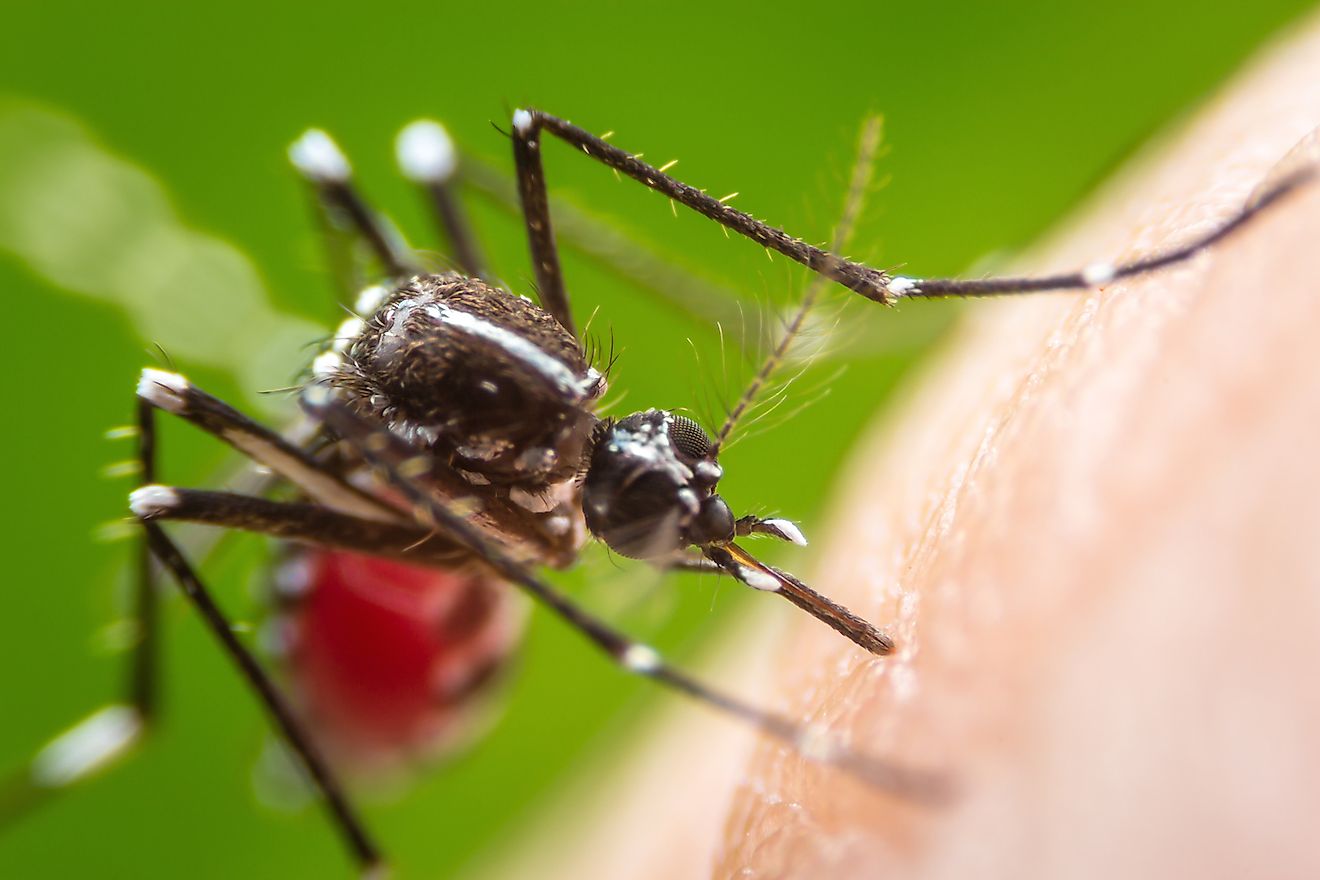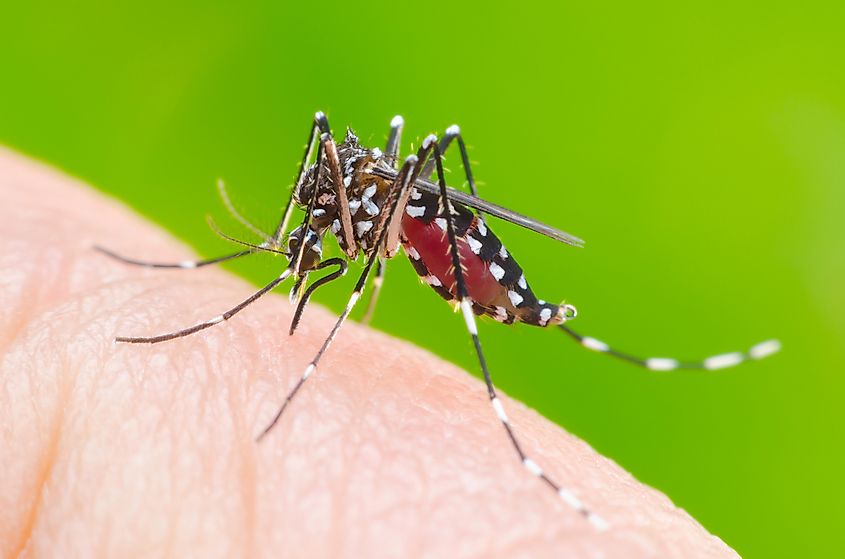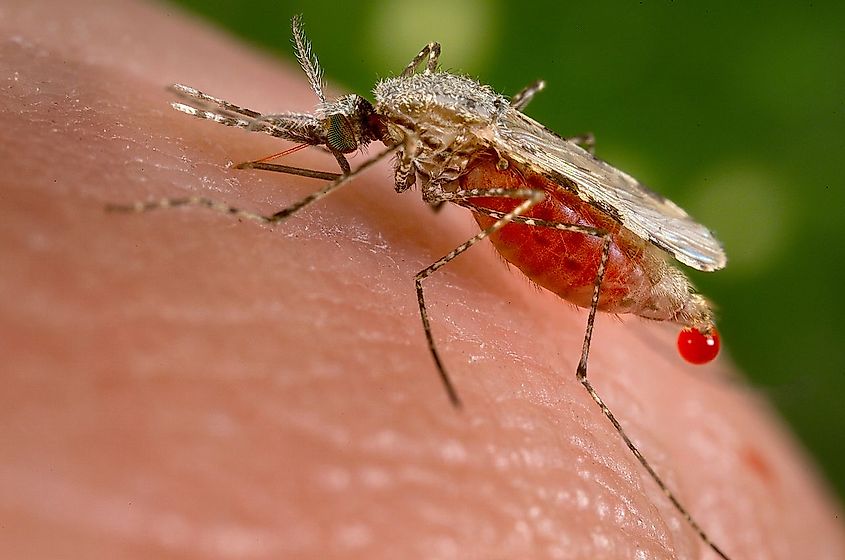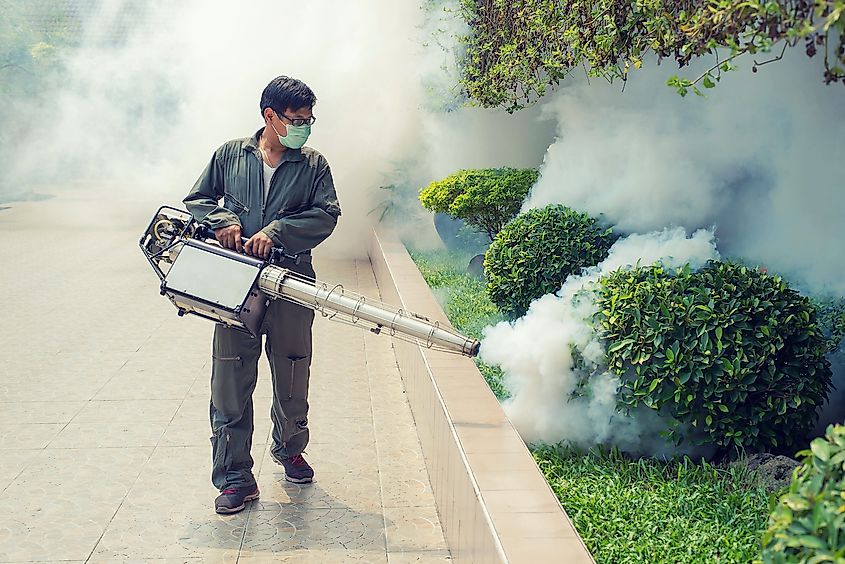How Many People Are Killed By Mosquitos Every Year?

- Mosquitoes are one of the smallest animals on Earth, yet they are the deadliest.
- Not many people develop yellow fever, but those with a severe case can die within 7 to 10 days.
- Many adults who contract the Zika virus have no symptoms at all, but the infection can have a severe effect on an unborn baby.
The tiny mosquito is actually more than a buzzing nuisance- it is the deadliest creature in the whole world. Yes, the lowly mosquito kills more individuals than any other animal each year. Thankfully, we can easily kill this bug with one swat, but mosquitoes can also sneak up on us and bite us before we even know we are a target, making them a formidable foe that can be tricky to control.
Reports indicate that mosquitoes killed about 830,000 people worldwide in 2018. Astoundingly, these pests have been known to take out as many as two million people in just one year. According to the World Health Organization, over half of the world’s population lives where there is also a mosquito population present, which is daunting considering the destruction they can cause. Mosquitoes kill people by biting them when the mosquitoes are infected with certain potentially deadly diseases, spreading the illness to the person. It is thought that mosquitoes themselves become infected with some illnesses by first biting an infected animal, and then carrying the diseases over to a human victim.
Here is a look at some of the deadly illnesses that can be brought to you through one innocent little mosquito bite.
Zika Virus
The Zika virus is transmitted through the Aedes aegypti mosquitoes, which generally bite people during the day, and while Zika is not that bad for the average person, for someone who is pregnant, it can be devastating to the baby. The Zika virus causes microcephaly in unborn babies, which is something that affects how the brain develops, causing congenital malformations. The Zika virus can also cause a miscarriage and pre-term birth as well as other complications during the mother’s pregnancy and in the life of the child.
Zika was first identified in monkeys in Uganda in 1947, and the first outbreak was recorded in 2007 in Micronesia. Infected individuals can be asymptomatic, but they can also experience a fever, a rash, conjunctivitis, a headache, and other aches and pains. This disease can be transmitted from mosquitoes to humans, and also from human to human through sexual contact, a blood transfusion, an organ transplantation. The disease can also be transmitted from a pregnant woman to her unborn fetus.

Dengue
Dengue fever is also spread to humans from the Aedes aegypti mosquito. About 40% of the world’s population lives in a Dengue-risk area, and this can be a leading cause of illness in these areas. Thankfully, only about one in four of every person infected with dengue will fall sick. The bad news is that this illness can develop to be life-threatening in just a matter of hours. People with this illness can be asymptomatic, but they can also experience a fever, aches and pains, a rash, vomiting, and pain behind the eyes. There is no specific treatment for dengue. Severe dengue is a medical emergency that needs immediate hospital care as it can result in shock and internal bleeding.
Yellow Fever
Yellow fever got its name from the fact that it can cause jaundice in the patients it infects. As with the illnesses above, a person with yellow fever can also experience muscle pain, nausea, vomiting and fatigue. Just a small amount of those who get this virus develop a severe case, but those who do can die in just 7 to 10 days. Thankfully, there is a vaccine to protect people against yellow fever, but it is not always easily accessible to the people who may need it most. Yellow fever is endemic to tropical areas of Africa, as well as Central and South America.
Chikungunya
This is yet another illness transmitted to humans via the Aedes aegypti mosquito. Chikungunya is a viral disease that also causes aches, pains, fatigue, rash, and nausea. It can cause extensive joint pain in people who have it, and can lead to chronic disease. This illness occurs mostly in Africa, Asia, and the Indian subcontinent, but it has also traveled to the Region of the Americas.
West Nile Virus
West Nile Virus is one illness on this list that is known to be present in the continental US, as well as in Canada. West Nile virus is known to cause few symptoms in people who contract it, as most only experience a headache or a mild fever, if anything. In other unfortunate souls, however, West Nile virus causes inflammation of the spinal cord and brain, and it can be deadly. Symptoms of the virus include a fever, headache, body aches, vomiting, diarrhea, fatigue, and a rash. Those with a neurological infection can also show signs of a very high fever, a stiff neck, a strong headache, disorientation, a stupor or coma, muscle tremors and jerking, seizures, and partial paralysis or muscle weakness. Immediate medical attention is needed if these symptoms arise.
Malaria

Malaria infected an estimated 228 million people worldwide in 2018, and sadly, most malarial deaths due to the virus occured in children. In that year, children under the age of five accounted for 67% of all malaria deaths. The vast majority of people who died from malaria lived in Africa, and around 405,000 people died, in total.
Malaria is caused by five different tiny parasites that are spread to humans through infected female Anopheles mosquitoes. In some places where malaria is endemic, people can develop partial immunity to the disease and as such, some adults be asymptomatic when infected. Other people, if they are infected with one of the most threatening malarial parasites, will need medical treatment within 24 hours as multi-organ failure can occur. There do exist antimalarial medicines, as well as a vaccine against one of the parasites that cause malaria, but malaria can be a difficult disease to control in areas where it is endemic.
Mosquito Control

The common mosquito may be smaller than your thumb but its effect on the human race is mighty. Multiple methods are used worldwide to attempt to control problematic mosquito populations, including larviciding which involves killing mosquito larvae, biocontrol, and adulticiding, which is the killing of adult mosquitoes. Pesticides, habitat modification, and biological-control agents can all work to accomplish these tasks.











